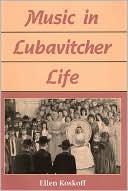Category Books
- Fiction Books & Literature
- Graphic Novels
- Horror
- Mystery & Crime
- Poetry
- Romance Books
- Science Fiction & Fantasy
- Thrillers
- Westerns
- Ages 0-2
- Ages 3-5
- Ages 6-8
- Ages 9-12
- Teens
- Children's Books
- African Americans
- Antiques & Collectibles
- Art, Architecture & Photography
- Bibles & Bible Studies
- Biography
- Business Books
- Christianity
- Computer Books & Technology Books
- Cookbooks, Food & Wine
- Crafts & Hobbies Books
- Education & Teaching
- Engineering
- Entertainment
- Foreign Languages
- Game Books
- Gay & Lesbian
- Health Books, Diet & Fitness Books
- History
- Home & Garden
- Humor Books
- Judaism & Judaica
- Law
- Medical Books
- New Age & Spirituality
- Nonfiction
- Parenting & Family
- Pets
- Philosophy
- Political Books & Current Events Books
- Psychology & Psychotherapy
- Reference
- Religion Books
- Science & Nature
- Self Improvement
- Sex & Relationships
- Social Sciences
- Sports & Adventure
- Study Guides & Test Prep
- Travel
- True Crime
- Weddings
- Women's Studies
Music in Lubavitcher Life »

Authors: Ellen Koskoff
ISBN-13: 9780252025914, ISBN-10: 0252025911
Format: Hardcover
Publisher: University of Illinois Press
Date Published: November 2000
Edition: (Non-applicable)
Author Biography: Ellen Koskoff
Book Synopsis
Music in Lubavitcher Life illuminates the world of the Lubavitcher Hasidim, a community of ultra-orthodox Jews centered in the Crown Heights section of Brooklyn, New York. Drawing primarily on twenty years of close study of the Lubavitcher community, Ellen Koskoff combines lively anecdotes with historical background and musical analysis to reveal music making among the Lubavitchers as a gateway to their ideas about the nature of human spirituality, human social interaction, and God.
Lubavitcher music centers on nigunim, a body of paraliturgical melodies that Lubavitchers regard as a primary form of spiritual communication with the divine. For a song to be included in the repertory of nigunim, it must conform to Hasidic religious and aesthetic principles. If brought in from the outside, it must be purified: stripped of its coarse outer shell (usually the text) and recomposed in accordance with coded musical structures (including certain melody types, ornamentation, and formal organization). Performance of nigunim adheres, among other things, to a process associated with the spirituality of the great Hasidic leaders of the past.
Along with vivid descriptions of musical performance in religious contexts and private gatherings, Koskoff details the musical sounds and structures that symbolize Lubavitcher social relations. In particular, she examines the differences between Lubavitcher women's and men's music making and the underlying beliefs and assumptions that give rise to gendered musical behaviors, such as the dictum that prohibits men from hearing a woman sing.
An insightful portrait of a distinctive community's musical and religious life, this volume is also a candid view of ethnographic research and of fieldwork's illusory objectivity.
Table of Contents
Subjects
 Judaism & Judaica
Judaism & Judaica  Movements & Sects - Judaism
Movements & Sects - JudaismHistory
 American History
American History  United States History - Northeastern & Middle Atlantic Region
United States History - Northeastern & Middle Atlantic RegionHistory
 Religious History
Religious History  Judaism & Judaica
Judaism & JudaicaHistory
 World History
World History  Jewish History
Jewish HistoryJudaism & Judaica
 Movements & Sects - Judaism
Movements & Sects - Judaism  Hasidism
HasidismNonfiction
 Social Sciences
Social Sciences  Jewish Studies
Jewish StudiesNonfiction
 Social Sciences
Social Sciences  Regional Studies
Regional StudiesReligion Books
 Judaism & Judaica
Judaism & Judaica  Movements & Sects - Judaism
Movements & Sects - JudaismScience & Nature
 Social Sciences
Social Sciences  Jewish Studies
Jewish StudiesScience & Nature
 Social Sciences
Social Sciences  Regional Studies
Regional StudiesSocial Sciences
 Jewish Studies
Jewish Studies  Jewish History
Jewish HistorySocial Sciences
 Regional Studies
Regional Studies  United States Studies
United States StudiesChristianity
 Christianity
Christianity  All Religion
All ReligionNonfiction
 History
History  American History
American HistoryNonfiction
 History
History  Religious History
Religious HistoryNonfiction
 History
History  World History
World HistoryNonfiction
 Religion
Religion  All Religion
All ReligionReligion Books
 Christianity
Christianity  All Religion
All Religion
